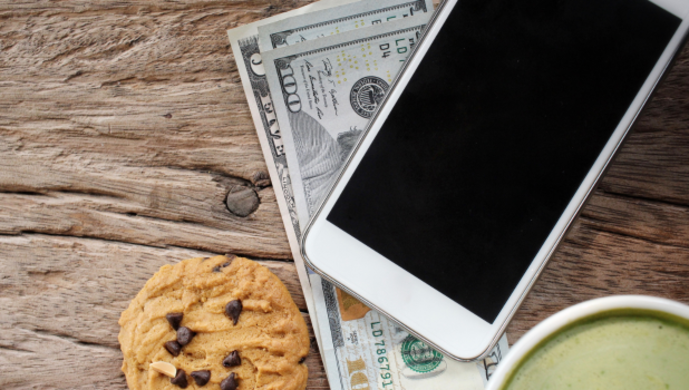In today’s world it is impossible to escape from subscriptions. If it is not television streaming services, gym memberships and a weekly delivery of cook-at-home meals, you will at least be subscribed to a direct debit for your telephone contract or energy supply.
As consumers, we continually enter subscriptions and although we may intend to cancel when we have watched the show or used the introductory offer, we often don’t. It is said we are inert when it comes to subscriptions – i.e., we tend to take no action and leave things as they are, even if the service decides to increase its price or change its terms and conditions.
We tend to take no action and leave things as they are, even if the service decides to increase its price or change its terms and conditions.
This characteristic is often exploited by companies who offer a bargain price sign-up offer, then boost the price once the consumer is embedded in the subscription and has become inert.
When signing up, are consumers aware of their future inertia? If they are, does it prevent them from signing up to seemingly attractive subscription offers? We explored whether this exploitative behavior is beneficial to companies and asked the question – should firms engage in it?
Two million people studied over two years
Many studies have explored the behaviors of consumers already signed up to subscriptions. For example, looking at the number of people who pay not to go to the gym has revealed the innate inertia of subscribed consumers. Instead, we wanted to understand what influences consumers when it comes to the initial decision of subscribing.
We set out to investigate the behaviors of people who saw a subscription contract, and how its different features influenced their decision to sign up. In addition, we wanted to track the future behavior of those who signed up for different contracts.
In a large-scale field experiment, we randomized the terms of subscription offers received by 2.1 million readers who hit the digital paywall of a large European newspaper.
Each reader was offered a subscription promo that either auto-renews OR auto-cancels. The auto-renew contract turns into a paid subscription for those who take up the promotion and do not explicitly cancel it – this is the exploitative contract. The auto-cancel contract will not automatically renew unless the promo taker clicks enroll onto a paid subscription – this is the non-exploitative contract.
We also offered a promotional trial period – for auto-renew and auto-cancel contracts – of either four weeks or two weeks, and a promotional price for these of either 0.99 euro or free (all the options can be combined with each other: contract type, duration and price). Crucially, all other aspects of the contract were the same. We then followed these potential subscribers for two years and observed their interactions with the platform.
Sophisticated consumers prevent their own inertia
We observed that almost a quarter of consumers prefer to take up offers with auto-cancelling contracts. This reveals that many consumers are aware of their future inertia.
As a consumer, when you see an exploitative subscription offer, you know that after you have watched the latest series of the show, you are likely to stay subscribed to a new streaming service for at least a short period. To avoid this, you go for the offer that supplies an easy opt-out, the auto-cancel contract.
Here, the consumer demonstrates an element of sophisticated behavior and pre-empts their future behavior. This is a novel finding as in previous studies consumers were thought to be naive to their inertia.
Increasing profits: play the long or the short game?
In the short-to-medium term (weeks/months), the consumers who signed up to auto-renewal contracts stay longer than those in the auto-cancel ones. This is key for companies as it shows that on this timescale, offering auto-renewal contracts can increase profits.
In the long term, there may be more profit in offering fairer auto-cancel contracts that build a loyal, content customer base.
However, in the longer term (over a year after the promotional period has ended) the newspaper company retained more subscribers that were in the initial auto-cancel group than in the auto-renewal group. Here, the initial profit advantages of the auto-renewal contract are cancelled out.
Consumer fight-back
So, should companies exploit consumer behavior to maximize profit? Our results suggest that, in the long term, the answer is ‘No.’
Initially, the company using auto-renew contracts will lose the people who are not inert - around 25% of their consumers. These people are aware of the auto-subscribe trap and avoid it. So, the company seeking a quick return misses out on these potential profits.
We also see that the remaining consumers, roughly 75%, are partially inert. They sign up for the auto-renewal but then realize their inertia and over time, they cancel the contract.
These consumers are likely to view the profit-seeking company in a less favorable light in the future. In some circumstances, they retaliate – with 10% less likely to sign up for another contract with the same company.
In combination, our results show that although customers know they are likely to stay subscribed to auto-renewing contracts, they underestimate exactly how inert they will be in the future and subscribe anyway. Only approximately 2% of the population are fully inert. They sign up to the contract and then stay in it despite not using the service.
A fairer subscription future?
So, it seems clear that the quick buck made from exploitative auto-renewal contracts can backfire. Some companies, like Netflix, are taking action to improve how they may be viewed by inactive consumers and are contacting this group to help them get out of subscriptions. In the long run, this may pay off and those consumers will return in the future.
Regulators are becoming more concerned about exploitative subscription offers that take advantage of consumers’ inert behavior. As such, we may start to see more subscription offers with fairer terms, such as a choice to auto-cancel or an auto-renewal with regular reminders and a one-click escape route.
Additional resources:
- FTC Report Shows Rise in Sophisticated Dark Patterns Designed to Trick and Trap Consumers (Federal Trade Commission, September 15, 2022)
- Application au 1er juin 2023 de la résiliation « en 3 clics » : les dispositions spécifiques aux contrats d’assurance pouvant être conclus en ligne (In French on Service-public.fr, June 6, 2023)








